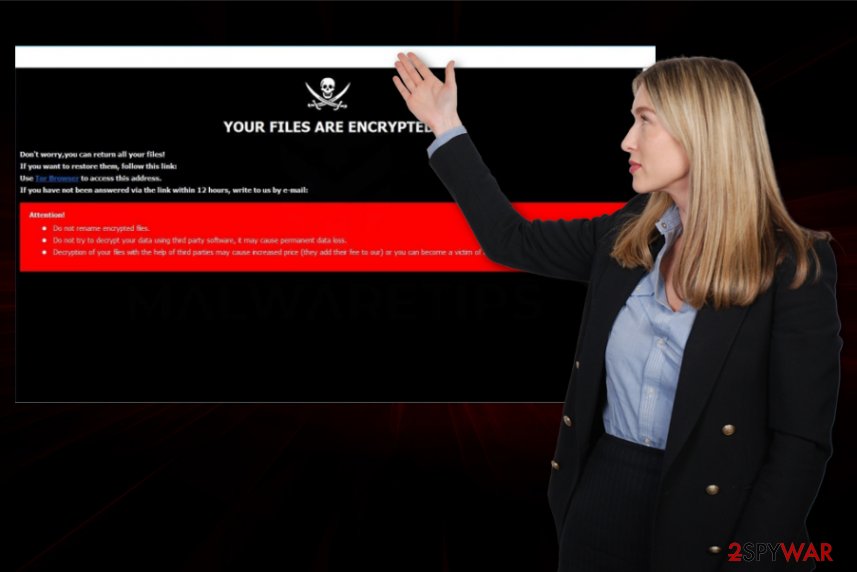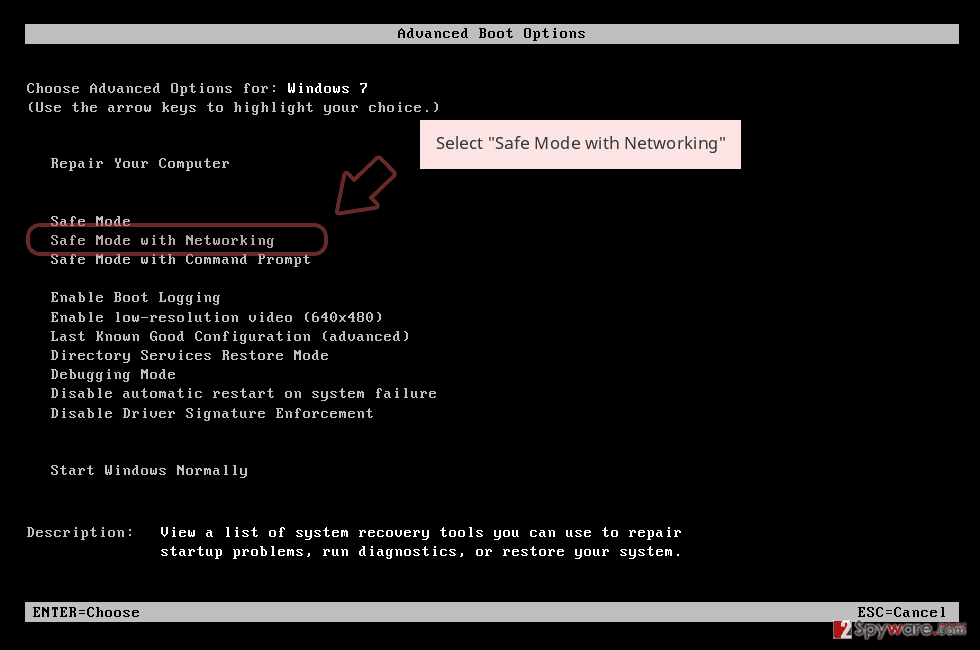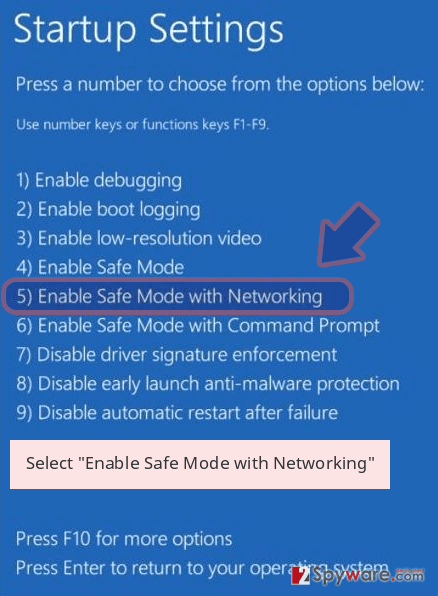[[email protected]].LX ransomware is the cryptovirus that locks users’ files and may even damage them completely overtime
![[help.crypt@aol.com].LX ransomware [help.crypt@aol.com].LX ransomware](https://www.cybersecurityplan.org/wp-content/uploads/2020/04/help-cryptaol-com-lx-ransomware.jpg)
![[help.crypt@aol.com].LX ransomware [help.crypt@aol.com].LX ransomware](https://www.cybersecurityplan.org/wp-content/uploads/2020/04/help-cryptaol-com-lx-ransomware.jpg)
LX ransomware is the threat that uses army-grade encryption algorithms to lock various files found on the targetted machine and then demands payments from victims. The ransom demand claims that criminals can recover encoded files and send data recovery tools for each person once the money transfer is made. However, there are no particular incidents where victims affected by this Dharma ransomware family got their files properly restored. It is not even decrypted, as recent analysis of the latest versions and ransomware campaigns show.[1]
This is a well-known malware version that gathers various files on the machine and makes them useless by encoding, so there is a reason for cryptocurrency demand. Paying gets you nowhere, so remain calm and don’t contact these criminals since any communication with cryptocurrency-extortionists can lead to the installation of more complex malware or even permanent data and money loss.
[[email protected]].LX ransomware virus gets this particular name form the identification extension which appears in the pattern .id-XXXXXXXX.[[email protected]].LX on every image, document, video, or audio file and even archived file. The particular key should match the victims’ ID that is set for each infected device and additionally shown in the ransom note – a program window that is displayed as soon as the encryption process is complete. It also is named using the help.crypt email address that is listed as a primary contact method.
However, you should ignore the message itself, encouragements to pay, and focus on getting your system back into your own hands from the control of malicious actors. It can be done, even though your files can remain affected. These ransom demands can go up to thousands of dollars, so it is not the best option to pay.
| Name | [[email protected]].LX ransomware |
|---|---|
| Family | Dharma ransomware |
| File marker pattern | At the end of every encoded file the appendix in this .id-XXXXXXXX.[[email protected]].LX pattern appears as a marker for locked data |
| Contact email | [email protected] and [email protected] |
| Ransom note | Text file FILES ENCRYPTED.txt contains contact information and an initial message about encryption. The program window named with one of the contact emails displays instructions on payment transfers and Bitcoin purchasing. This message also has an identification key that is set for each victim and is included in the file extension pattern |
| Damage | Ransomware is a threat that involves blackmail and valuable files. The infection can lead to damaged files and money or data loss. When additional payload of malware is launched system can be fully controlled by attackers |
| Distribution | Spam email attachments include malicious files, so macros get enabled and trigger the installation of cryptovirus payload. This can also happen when the torrent file or pirated software is installed, or machine is affected by other malware |
| Elimination | To remove [[email protected]].LX ransomware from the machine, you need to rely on anti-malware tools and run them on the device to find all associated programs and possibly malicious file |
| Repair | Cryptovirus can also damage the system by running processes and programs in the background, so features like this need to get fully repaired. To fix virus damage, install a PC repair tool or a system optimizer like Reimage Reimage Cleaner Intego |
LX ransomware is the example of a cryptovirus that is known for more than four years now, so there is no reason to trust these people that are not concerned with victims’ valuables. When a file is made inaccessible, and users cannot even open them to see what the document or image contains, the encryption is done. This process involves the usage of army-grade encryption algorithms.
[[email protected]].LX ransomware then can demand payments from victims by delivering the ransom message with the help of text file and program window. The program window named using one of the contact emails shows the victims’ ID and instructions on the main money transfer. The FILES ENCRYPTED.txt message only includes those two contact emails needed for the communication between criminals and the victim. However, experts[2] recommend staying away from any of these methods and do not consider paying at all.
The program window shows these instructions:
All your files have been encrypted!
All your files have been encrypted due to a security problem with your PC. If you want to restore them, write us to the e-mail [email protected]
Write this ID in the title of your message
In case of no answer in 24 hours write us to these e-mails: [email protected]
You have to pay for decryption in Bitcoins. The price depends on how fast you write to us. After payment we will send you the decryption tool that will decrypt all your files.
Free decryption as guarantee
Before paying you can send us up to 1 file for free decryption. The total size of files must be less than 1Mb (non archived), and files should not contain valuable information. (databases,backups, large excel sheets, etc.)
How to obtain Bitcoins
The easiest way to buy bitcoins is LocalBitcoins site. You have to register, click ‘Buy bitcoins’, and select the seller by payment method and price.
https://localbitcoins.com/buy_bitcoins
Also you can find other places to buy Bitcoins and beginners guide here:
http://www.coindesk.com/information/how-can-i-buy-bitcoins/
Attention!
Do not rename encrypted files.
Do not try to decrypt your data using third party software, it may cause permanent data loss.
Decryption of your files with the help of third parties may cause increased price (they add their fee to our) or you can become a victim of a scam.
LX ransomware encrypts your files that are commonly used, but the threat can easily access system folders and damage, affect or even copy data from there. It deletes Shadow Volume Copies, so you cannot use ShadowExplorer as a data restoring method for the affected files. [[email protected]].LX ransomware leaves as fewer options as it can, so it disables security tools and deletes other programs that could possibly help with malware distribution or file recovery. 
LX ransomware is the cryptovirus that manages to affect your machine in the background while the ransom is demanded on the program window – ransom note.

LX ransomware is the cryptovirus that manages to affect your machine in the background while the ransom is demanded on the program window – ransom note.
You should not pay under any circumstances. When you contact criminals they can possibly gather information from you or send other malware directly via email. Remove [[email protected]].LX ransomware as soon as the ransom-demanding message appears on the screen and try to ignore any of the notes and keep the risk of getting other malware at low.
[[email protected]].LX ransomware removal process can get difficult due to all the changes in system folders and disabled functions of the device. However, there are features like Safe Mode that allows rebooting the machine and running needed tools then. AV engines can then work as they supposed to.
LX ransomware virus can get detected[3] in different names and this particular scan result depends on the database anti-malware tool is using. Don’t focus on the particular detection or the name of the virus, terminate any intruders that your antivirus tool indicates as dangerous. This is how you can fully clean the machine.
As for the virus damage removal and file recovery, we can tell you that there are not many options left after all those changes [[email protected]].LX ransomware does on the affected device. You can run the additional scan using Reimage Reimage Cleaner Intego to find and repair system files, get rid of virus damage, and then follow with file repair using data backups from an external device or a cloud service. ![[help.crypt@aol.com].LX ransomware virus [help.crypt@aol.com].LX ransomware virus](https://www.cybersecurityplan.org/wp-content/uploads/2020/04/help-cryptaol-com-lx-ransomware-2.jpg)
[[email protected]].LX ransomware is a version of the well-known threat that can send additional malware on the affected system and manage more functions of the computer.
![[help.crypt@aol.com].LX ransomware virus [help.crypt@aol.com].LX ransomware virus](https://www.cybersecurityplan.org/wp-content/uploads/2020/04/help-cryptaol-com-lx-ransomware-2.jpg)
[help.crypt@aol.com].LX ransomware is a version of the well-known threat that can send additional malware on the affected system and manage more functions of the computer.
Spam email campaigns with malicious file attachments
Email boxes get often filled with spam emails from unwanted senders, and all the unexpected emails can contain anything and everything attached to them because the internet is not a secure place. In most cases, these suspicious emails seem to be legitimate because the notification states about a message from a company or service that people often use, but there are some red flags.
One of them is the topic or a subject line of the email. when you receive any financial-themed email from an unknown source – delete it, because emails with following subject lines are known to deliver ransomware:
- “Your repayment invoice.”
- “Your order has actually been revoked.”
- “Your financial institution invoice.”
- “Your PayPal billing.”
When files in document or PDF formats get opened, you may receive the macro enabling message, and one agreement can trigger the drop of malware. Ignore any suspicious messages and pay attention to senders and sources.
Tye guide for LX ransomware virus termination
The best tip before all the steps of [[email protected]].LX ransomware removal is to make sure that you have data backups and that the device is either external or cloud-based. If you enter the backup device with files not he infected machine, you can get them permanently damaged.
Then you can start with other steps needed to completely remove [[email protected]].LX ransomware from the machine. The most crucial thing is selecting a professional anti-malware tool. Security software provides the features you need, so SpyHunter 5Combo Cleaner or Malwarebytes can be the ones for you. Follow the scan results and suggestions from the program. When the machine is clean, repair damage using Reimage Reimage Cleaner Intego, and ONLY then move to file restoring.
[[email protected]].LX ransomware virus decryption is not possible because researchers haven’t released an official tool that could restore all files for you and other victims. The possible solutions that can come up in the future are leaked database of criminals with all the victim IDs or the release of a flawed encryption coding. However, this shouldn’t be expected from such complex malware creators because Dharma is one of the most persistent.
Remove [[email protected]].LX using Safe Mode with Networking
Reboot the machine in Safe Mode with Networking before you run the AV tool on your device, so you can get rid of [[email protected]].LX ransomware
- Windows 7 / Vista / XP
- Click Start → Shutdown → Restart → OK.
- When your computer becomes active, start pressing F8 multiple times until you see the Advanced Boot Options window.
- Select Safe Mode with Networking from the list

Windows 10 / Windows 8
- Press the Power button at the Windows login screen. Now press and hold Shift, which is on your keyboard, and click Restart..
- Now select Troubleshoot → Advanced options → Startup Settings and finally press Restart.
- Once your computer becomes active, select Enable Safe Mode with Networking in Startup Settings window.

-
Log in to your infected account and start the browser. Download Reimage Reimage Cleaner Intego or other legitimate anti-spyware program. Update it before a full system scan and remove malicious files that belong to your ransomware and complete [[email protected]].LX removal.
If your ransomware is blocking Safe Mode with Networking, try further method.
Remove [[email protected]].LX using System Restore
System Restore feature is helpful for the virus removal because it allows the user to recover machine in a previous state
Bonus: Recover your data
Guide which is presented above is supposed to help you remove [[email protected]].LX from your computer. To recover your encrypted files, we recommend using a detailed guide prepared by 2-spyware.com security experts.
If your files are encrypted by [[email protected]].LX, you can use several methods to restore them:
Data Recovery Pro is a program that manages file restoring when data gets either encrypted or completely deleted
You can use this third-party program for files encrypted by [[email protected]].LX ransomware or accidentally deleted
- Download Data Recovery Pro;
- Follow the steps of Data Recovery Setup and install the program on your computer;
- Launch it and scan your computer for files encrypted by [[email protected]].LX ransomware;
- Restore them.
Try Windows Previous Versions feature
If you already enabled System Restore feature and managed to recover the system to a previous version, this is the option for your data recovery
- Find an encrypted file you need to restore and right-click on it;
- Select “Properties” and go to “Previous versions” tab;
- Here, check each of available copies of the file in “Folder versions”. You should select the version you want to recover and click “Restore”.
ShadowExplorer is the alternate method for file restoring purposes
When [[email protected]].LX ransomware affects Shadow Volume Copies, you cannot repair files using them. If these pieces of files are untouched, ShadowExplorer can help
- Download Shadow Explorer (http://shadowexplorer.com/);
- Follow a Shadow Explorer Setup Wizard and install this application on your computer;
- Launch the program and go through the drop down menu on the top left corner to select the disk of your encrypted data. Check what folders are there;
- Right-click on the folder you want to restore and select “Export”. You can also select where you want it to be stored.
Decryption tools for LX ransomware are not available
Finally, you should always think about the protection of crypto-ransomwares. In order to protect your computer from [[email protected]].LX and other ransomwares, use a reputable anti-spyware, such as Reimage Reimage Cleaner Intego, SpyHunter 5Combo Cleaner or Malwarebytes
This entry was posted on 2020-03-31 at 06:22 and is filed under Ransomware, Viruses.

